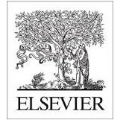The 2019-2020 Black Summer bushfires in Australia devastated 19 million hectares, destroyed 3,000 homes, and lasted seven months, demonstrating the escalating scale and urgency of wildfire threats requiring better forecasting for effective response. Traditional fire modeling relies on manual interpretation by Fire Behaviour Analysts (FBAns) and static environmental data, often leading to inaccuracies and operational limitations. Emerging data sources, such as NASA's FIRMS satellite imagery and Volunteered Geographic Information, offer potential improvements by enabling dynamic fire spread prediction. This study proposes a Multimodal Fire Spread Prediction Framework (MFiSP) that integrates social media data and remote sensing observations to enhance forecast accuracy. By adapting fuel map manipulation strategies between assimilation cycles, the framework dynamically adjusts fire behavior predictions to align with the observed rate of spread. We evaluate the efficacy of MFiSP using synthetically generated fire event polygons across multiple scenarios, analyzing individual and combined impacts on forecast perimeters. Results suggest that our MFiSP integrating multimodal data can improve fire spread prediction beyond conventional methods reliant on FBAn expertise and static inputs.
翻译:暂无翻译



